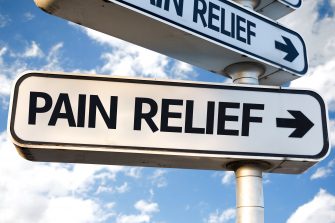Maintenance Care Helps Chronic Non-specific Low Back Pain
 A study published in Spine targeted the use and efficacy of maintenance spinal manipulation (SMT) for patients with chronic non-specific low back pain. Researchers evaluated 60 patients who were separated into 3 groups. One group received 12 treatments of “sham SMT” over the course of a month. The second group received 12 real treatments of SMT over the course of a month then no follow-up care. The final group received 12 SMT treatments in a month followed by “maintenance spinal manipulation” every 2 weeks for an additional 9 months.
A study published in Spine targeted the use and efficacy of maintenance spinal manipulation (SMT) for patients with chronic non-specific low back pain. Researchers evaluated 60 patients who were separated into 3 groups. One group received 12 treatments of “sham SMT” over the course of a month. The second group received 12 real treatments of SMT over the course of a month then no follow-up care. The final group received 12 SMT treatments in a month followed by “maintenance spinal manipulation” every 2 weeks for an additional 9 months.
Researchers collected pain and disability scores, general health status, as well as back-specific patient satisfaction data prior to the study beginning and then at 1, 4, 7 and 10 month intervals.
Results of the study show that patients who received the real spinal manipulation had “significantly lower pain and disability scores than first group at the end of 1-month period.” The patients in the 2nd group, who did not receive follow-up therapy, reported pain and disability scores had returned to near baseline levels by the 10 month evaluation. Meanwhile, the final group, who received both a period of intensive SMT followed by maintenance care experienced continued improvement in their symptoms at the 10 month evaluation.
This study shows that spinal manipulative therapy is an effective treatment for chronic non-specific low back pain. Researchers concluded maintenance SMT, after the initial intensive therapy period, can help provide the patient with lasting relief of symptoms.
In light of the current opioid epidemic, this provides evidence for the safety and efficacy chiropractic as a primary alternative to opioid usage. Looking for a pain relief option that doesn’t involve opioids? Click here to find a doctor of chiropractic near you.
SOURCE: “Does maintained spinal manipulation therapy for chronic nonspecific low back pain result in better long-term outcome?” Senna MK1, Machaly SA. – Spine (Phila Pa 1976). 2011 Aug 15;36(18):1427-37. doi: 10.1097/BRS.0b013e3181f5dfe0.